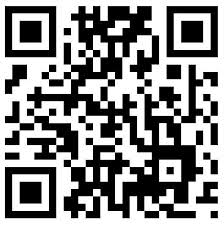 Two weeks ago we introduced you to SnapScan, a smartphone application used for payments. SnapScan uses QR codes to host a vendor’s banking information in a secure way. But how do these unintelligible blocks work?
Two weeks ago we introduced you to SnapScan, a smartphone application used for payments. SnapScan uses QR codes to host a vendor’s banking information in a secure way. But how do these unintelligible blocks work?
A QR code, or Quick Response Code is a type of matrix or two-dimensional barcode. So, in fact it’s really only a funny barcode. However, QR codes can include more information than the traditional bar code and are currently one of the most-used types of two-dimensional barcodes.
This wasn’t always the case. Before SnapScan and other payment applications started using QR, they were frequently used in consumer advertising, in magazines, on buses, business cards, etc. They could include any additional information users may need, if they were interested. Typically it would have a link to a website, where all the additional information would be contained.
The attempt to draw users away from print media to digital wasn’t so successful. People got bored and irritated by the general uselessness of these little blocks and started using them less and less. That is, until payment services increased their popularity.
A QR code consists of a collection of square dots, arranged on a square grid on a white background. It can be read by an imaging device with a camera. such as your smart phone with the right reader application installed. Scanning the codes with a mobile phone is referred to as mobile tagging.
After the image is scanned, it’s processed by using the Reed-Solomon error correction method to interpret the image. Data is then extracted from the patterns present in the image. Codes can be used for product trading, item identification, time tracking, document management and general marketing.
Denso Ware first invented a QR code in 1994 to track vehicles during manufacture and it was specifically used in the automotive industry in Japan.Today these blocks of info can be seen on train tickets in China (since 2011 already) and a company in Seattle – believe it or not – has started manufacturing headstones with QR codes. (read more about it here.)
[SOURCES: www.memeburn.com & www.wikpedia.org]

Twee weke gelede het ons julle vertel van SnapScan, `n slimfoon-applikasie wat deesdae algemeen gebruik word vir betalings. SnapScan gebruik QR-kodes om winkeleienaars se bankinligting op `n veilige wyse te stoor. Maar hoe werk hierdie onverstaanbare blokkies?
`n QR-kode of “Quick Response Code” is `n tipe matriks of twee-dimensionele strepieskode. So eintlik is dit maar net `n snaakse strepieskode. Die enigste verskil is dat `n QR-kode meer inligting kan hou as die gewone strepieskode. Dis ook tans een van die mees-gebruikte twee-dimensionele strepieskodes.
Dit was egter nie altyd die geval nie. Voor SnapScan en ander betaal-toepassing begin het om die QR-kode te populariseer, is dit dikwels gebruik vir bemarking in tydskrifte, op busse, besigheidkaartjies, ens. Dit het enige addisionele inligting bevat waarin gebruikers sou belangstel, byvoorbeeld ook `n skakel na `n webwerf, waarop al die ekstra inligting gelaai was.
Die poging om gebruikers van die drukmedia na digitaal te lok, was nie heeltemal suksesvol nie. Mense het verveeld en geirriteerd geraak met die nuttelose blokkies en minder en minder begin gebruik. Totdat betaaldienste onlangs hul populariteit verhoog het.
`n QR-kode bestaan uit `n versameling vierkantige kolletjies op `n vierkantige gids met `n wit agtergrond. Dit kan gelees word deur `n toestel met `n kamera met die regte leestoepassing geinstalleer – soos jou slimfoon. Die skandeer van die kodes met `n mobiele foon word na verwys as “mobile tagging”.
Nadat die beeld geskandeer is, word dit verwerk deur middel van die Reed-Solomon foutkorreksie metode om die beeld te interpreteer. Data word dan onttrek uit die patrone wat in die beeld opgetel word. Kodes kan gebruik word vir produkhandel, item-identifikasie, dokumentbestuur en algemene bemarking.
Denso Ware het in 1994 aanvanklik die QR-kode ontwerp om voertuie na te spoor gedurende die vervaardigingsproses and dis spesifiek gebruik in Japan se motor industrie. Vandag is dié blokkies te sien op treinkaartjies om China (al sedert 2011) en `n maatskappy in Seattle het begin om grafstene te vervaardig met QR-kodes (ja regtig, lees meer daaroor hier)
[BRONNE: www.memeburn.com & www.wikpedia.org]

